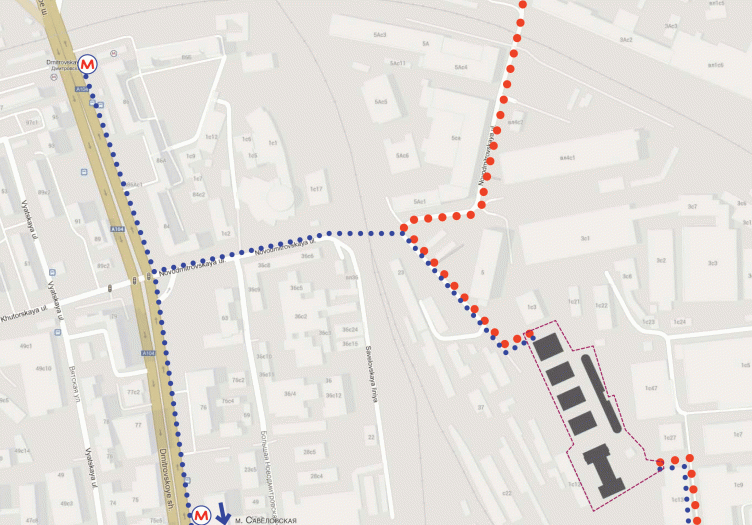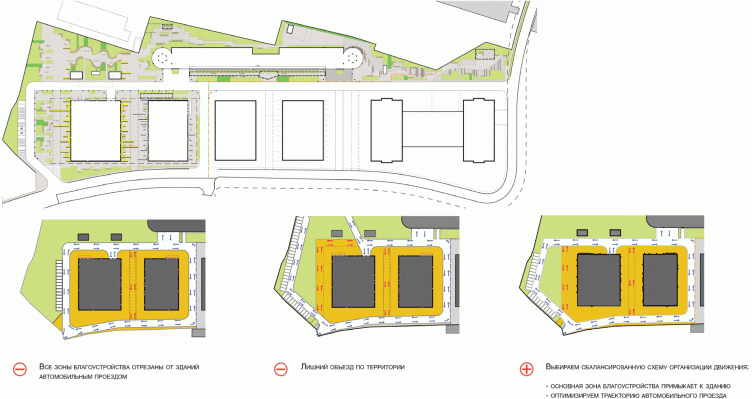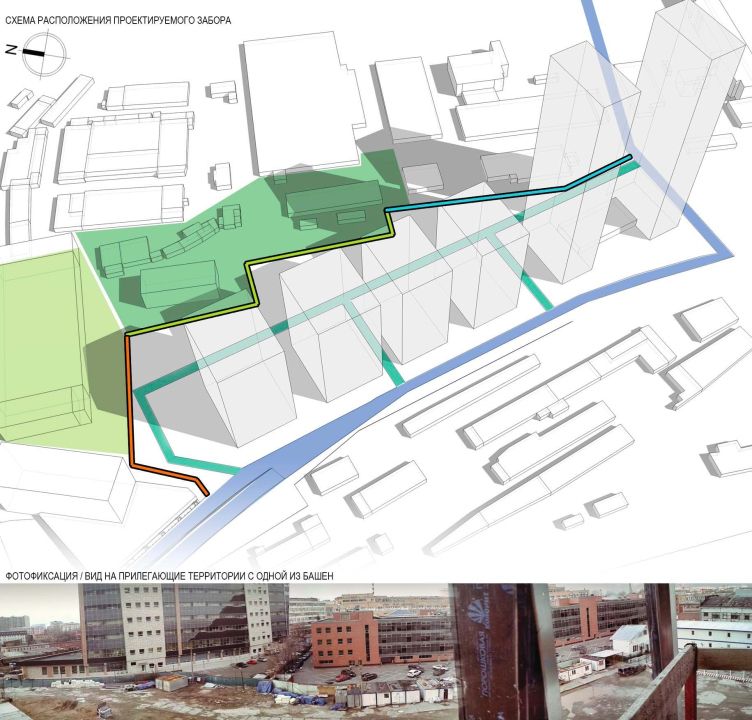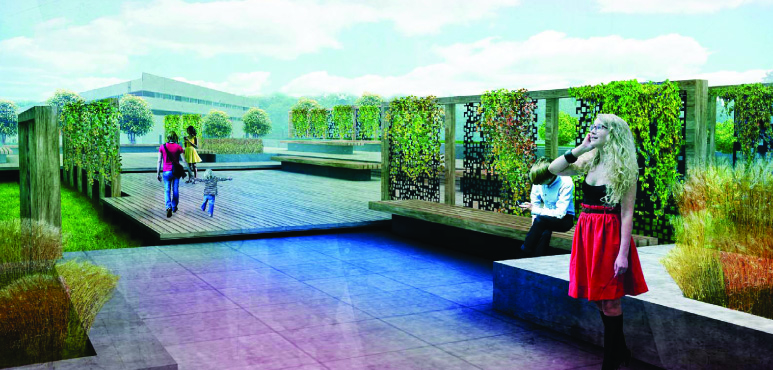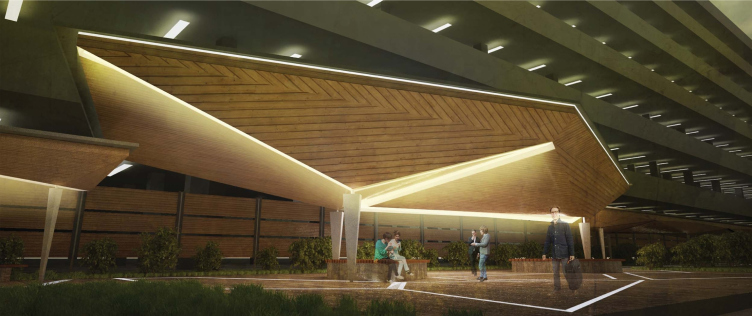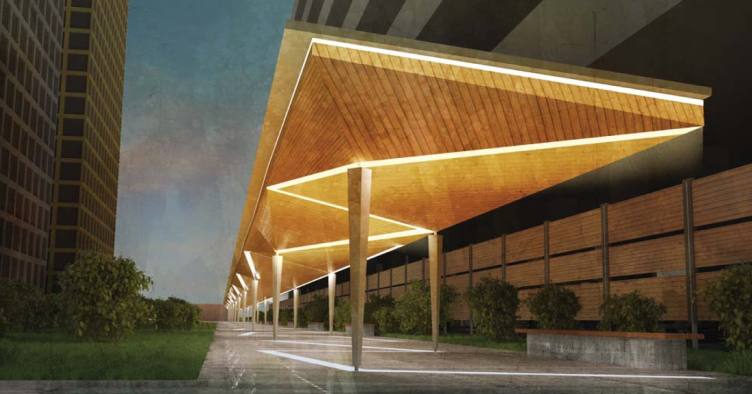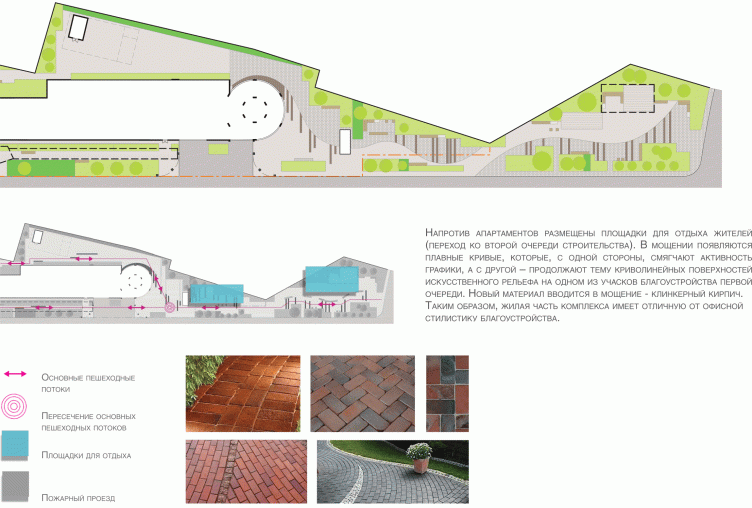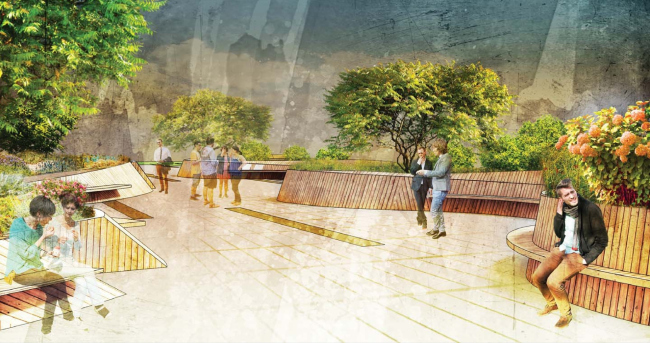
Concept of landscaping the territory of the multifunctional office and business center "Savelovsky City". Park part of of the landscaping © Т+Т Architects
The theme of landscaping the urban territories came into out life quickly and it is pretty much everywhere now: the architects come out for mini-rallies for the tender for the Triumphal Square, the Construction Department changes the Pokrovka Street beyond recognition, and the PR departments of the developer companies publish reviews of the landscaping of the large office complexes. If implemented, this project done by Т+Т architects, has every chance to make one of these reviews.
T+T architects got the commission for landscaping the complex of "Savelovsky City" that is being built on the Skladochnaya Street upon the project of SPEECH Bureau. The place is surrounded by a large industrial park that has for years been turning into a conglomerate of office buildings. "Savelovsky City" consists of four 20-story office buildings in its northern and central parts and two 47-floor towers in the loosely treated Chicago style in the south. The first stage of construction included the parking lot, the two north office buildings and - the landscape project in question. Besides the territory improvement concept, T+Т architects also developed the detailed design and the paperwork for it.
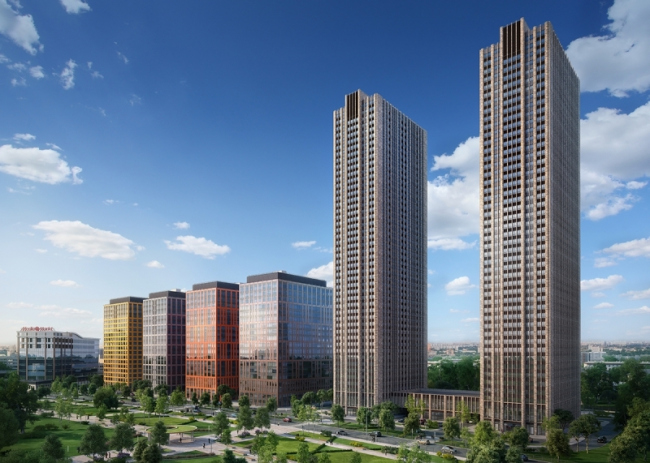
General view of the complex (SPEECH Project). Picture courtesy of mr-group.ru, 08.2014
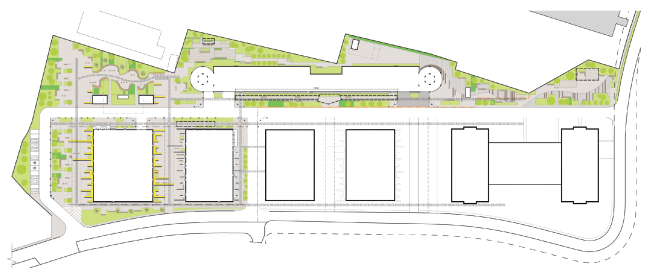
Landscaping plan. Concept of improvement of the business and office center "Savelovsky City" © Т+Т Architects
First of all, the architects removed from the comparatively small (1.65 hectares) territory the redundant above-ground parking garages: the complex has in it enough parking stalls thanks to the 8-tier garage and the underground parkings under each building. The authors also slightly improved the driving layout, turning one extra driveway into the fire lane - meaning, virtually, handing it over to the pedestrians. At the entrance to the complex, there appeared a small pedestrian-only square of a triangular shape. The architects also paid attention to the fence: it protects the territory from only two sides and, depending on its surroundings, changes its form, transforming from a solid concrete wall to a metal pale fence of varying density and then to a 60-centimeter retainer wall.
In order to make the complex, hidden among the surrounding buildings, more easily findable, the architects proposed to install next to the exit from the highway a guidance sign, coming up with a few options of it: from a conditional arrow of perforated metal to a backlit LED cube on a stand, looking almost as a billboard.

Guidance sign location plan. Concept of improvement of the business and office center "Savelovsky City" © Т+Т Architects
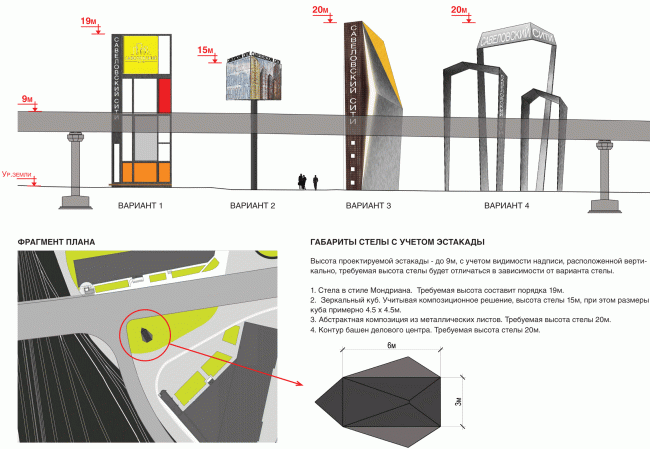
The height of the towers with regard to the height of the flyover. Concept of improvement of the business and office center "Savelovsky City". © Т+Т Architects

The layout of the fences. Concept of improvement of the business and office center "Savelovsky City". © Т+Т Architects
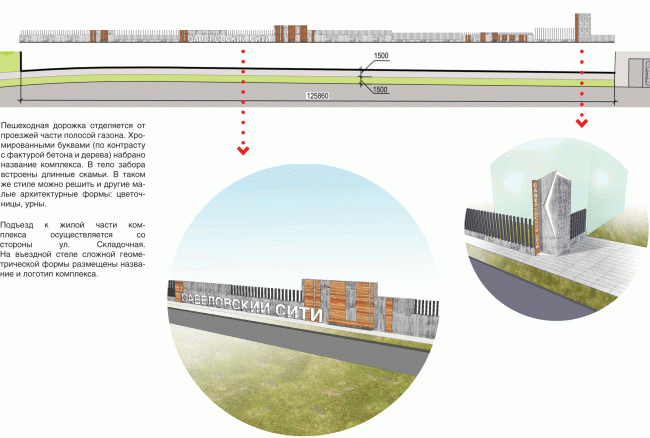
The layout of the fence running along the street and the view from the Skladochnaya Street. Concept of improvement of the business and office center "Savelovsky City". © Т+Т Architects
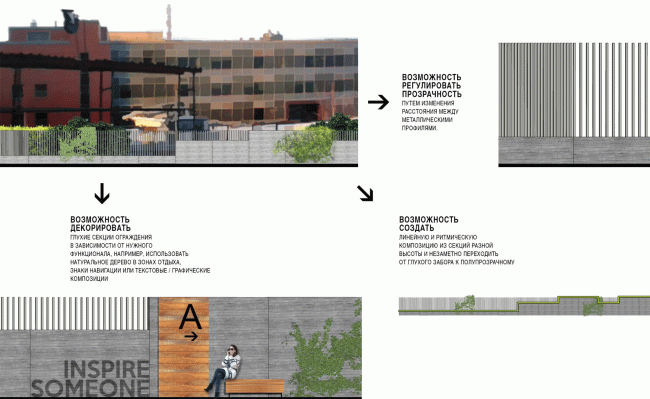
Variativity and the decoration of the fences. Concept of improvement of the business and office center "Savelovsky City". © Т+Т Architects
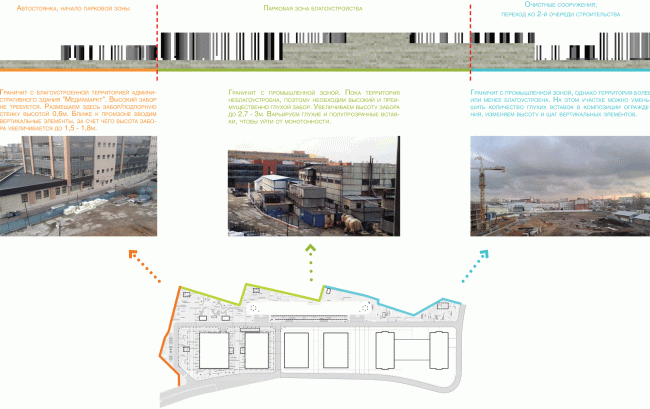
Typology of the fences. Concept of improvement of the business and office center "Savelovsky City". © Т+Т Architects
Passing thus round the land site, let us get back to its content - it is truly diverse indeed. The paving is turned into geometric pattern - it is plainly seen from the offices up above when one looks down on the trails, benches, and flower beds. The pattern is liberally embellished with the strokes of bright colored asphalt: they continue the bands of colored metal on the facades of the office buildings that thus look as if they either grow from the earth or grow into the landscape with their decorative metallic "roots".
The territory is divided into six theme zones. One of them is the already-mentioned pedestrian square adjoining the triangle next to the main entrance. "Flowing down from the facades", the decorative lines are echoed by the punctured lines of the rectangular benches that are hidden from the mini-parking by tall grass, bushes, and trees in tall tubs. The second zone is business-like and saturated - located between two buildings, it is expected to have almost no green plants, only some grass in the rectangular flower beds.
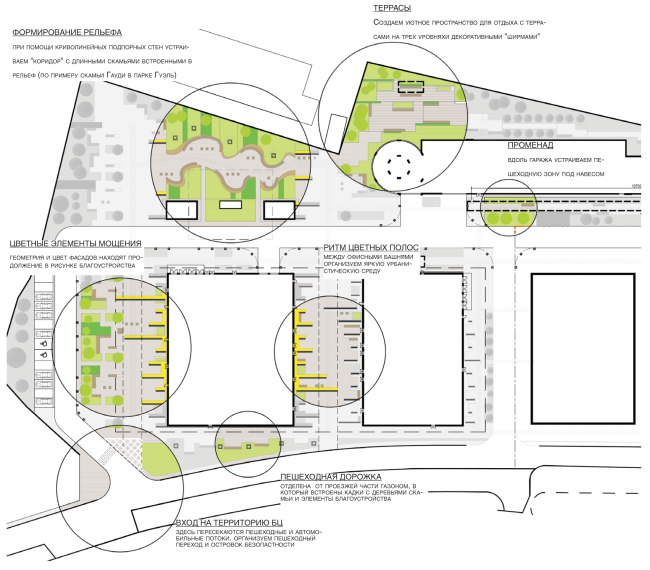
Detailed elaboration of the coceptual proposal. Concept of improvement of the business and office center "Savelovsky City". © Т+Т Architects
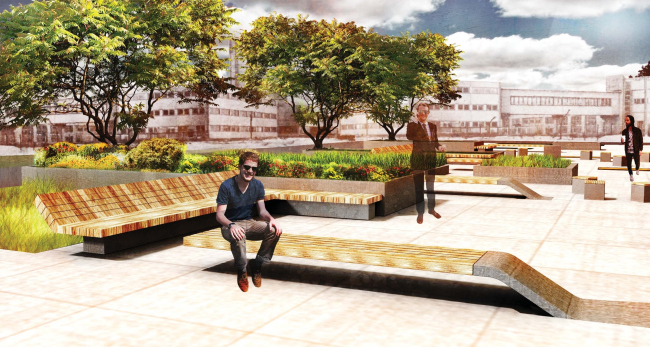
The square opposite the main entrance. Concept of improvement of the business and office center "Savelovsky City". © Т+Т Architects
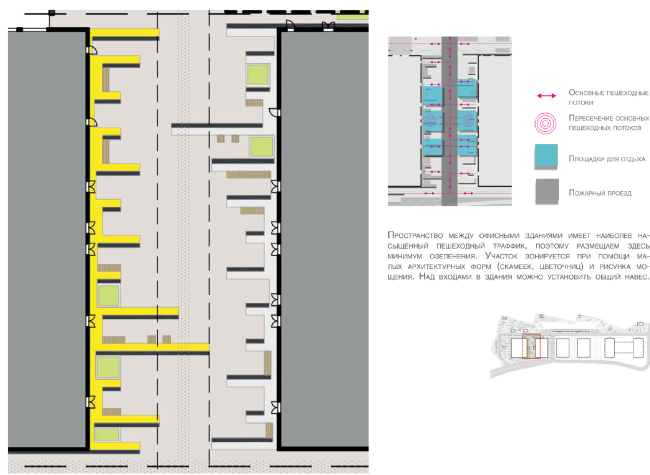
Space between the office buildings. Concept of improvement of the business and office center "Savelovsky City". © Т+Т Architects
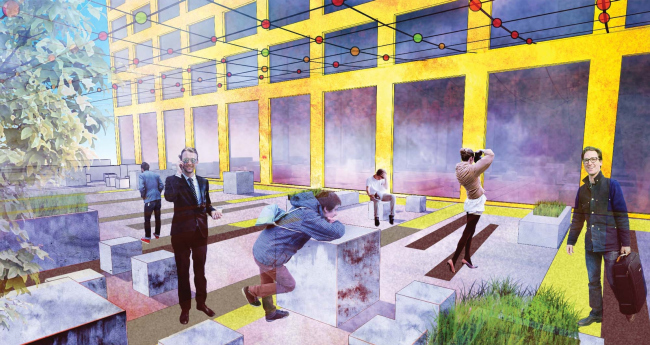
Space between the office buildings. Concept of improvement of the business and office center "Savelovsky City". © Т+Т Architects
The east part includes three recreation zones. The first, the "park" one is centered around the inbuilt curvilinear benches: "at the example of the Gaudi Bench in Guell park " - the architects explain; only in this case the benches are not maiolica but wooden. In the middle there is a little terraced park, it is here that the concrete fence was required so as to fence the complex off from the unwelcome industrial park vicinity; the terraces that use the relief drop, also help divert people's attention from the surroundings. This is the called "place for solitary recreation".
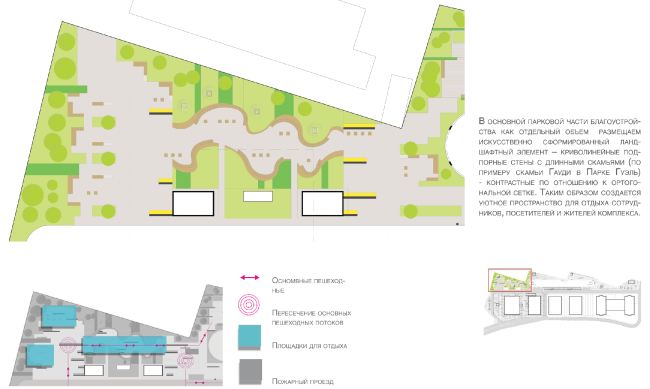
Concept of improvement of the business and office center "Savelovsky City". The park part. © Т+Т Architects
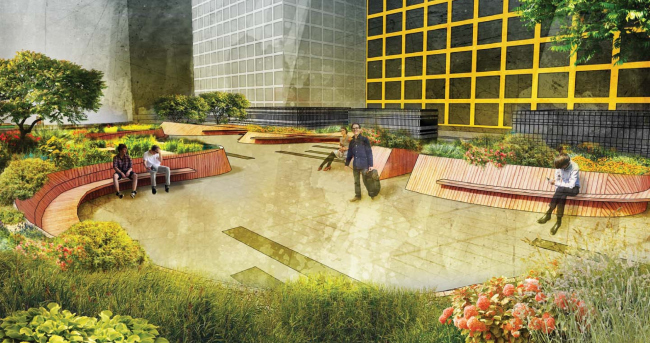
Concept of improvement of the business and office center "Savelovsky City". The park part. © Т+Т Architects
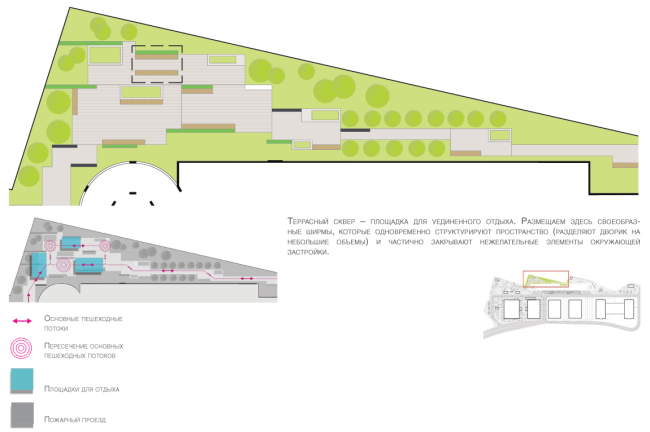
Concept of improvement of the business and office center "Savelovsky City". The terraced park part. © Т+Т Architects
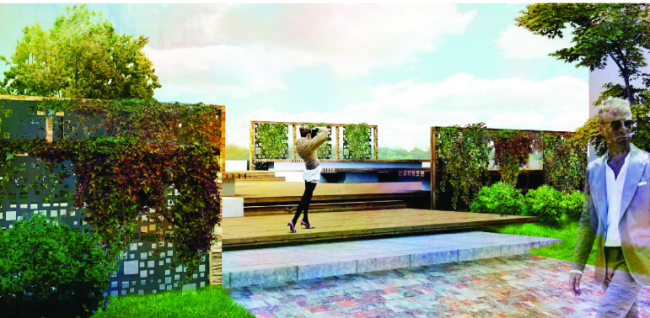
Concept of improvement of the business and office center "Savelovsky City". The terraced park part. © Т+Т Architects

Concept of improvement of the business and office center "Savelovsky City". The terraced park part. © Т+Т Architects
Between the 8-tier parking and the office buildings there is an elongated promenade under a bulging wood-covered roof with a zigzag line of lamps: the awning conceals from the by-passers' eyes the on-the-simple-side facades of the parking garage; it also serves as the pedestrian boulevard that interconnects different parts of the complex.
In the southern part, next to the residential towers, there is a little park with children's playgrounds. The wavy lines of the trails are enhanced here by the soft hue of the terra cotta pavement.
The list of different "architectural feelings" was also augmented by a multitude of lights. The strokes in the surface of the pavement echo the stripes of the colored asphalt; the lantern posts of different height change their scale, the flexible bands of the LED's backlight from beneath the lines of the benches, sometimes wavy, sometimes jagged.
The interesting proposals are literally brimming over; the detailed elaboration of the space is raised to fine art here, it has about it less of a landscape feel and more elaboration of the inner courtyard or a small neat town park (which is the complete opposite of the traditional Moscow grand-scale approach and the breadth of the asphalt fields that we are so used to seeing in thus city and that is felt especially acutely in the industrial parks). This territory is, on the other hand, of the "town" type, carefully decorated, like an islet among the haphazard industrial territories. One thing can be stated for sure: thus project is so saturated with the territorial and decorative ideas that the future inhabitants and office workers will sure have a fun time living and working here.
The square opposite the grand entrance. Concept of organizing the territory of the business and office center "Savelovsky City" © T+T Architects






